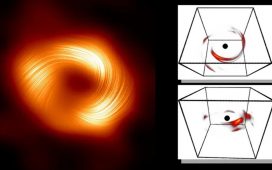Researchers exploring Antarctica’s seabed have discovered a thriving, unprecedented colony of icefish “about a third of the size of London”.
The surprise discovery of about 60 million active nests was made by a team of biologists while collecting routine data at 1.5-2.5 metres above the seafloor of Antarctica’s southern Weddell Sea. Before this discovery, the largest found colony contained only 60 nests.
“We expected to see the normal Antarctic seafloor … [but] during the first four hours of our dive, we saw nothing but fish nests,” said Autun Purser, of the Alfred Wegener Institute for Polar and Marine Research in Germany, and lead author of the study published in Current Biology.

The ecosystem was found by accident using the ocean floor observation and bathymetry system, a large, towed camera device that records photos, videos and takes measurements of deep-sea habitats.
Researchers were initially interested in the area because of a process called upwelling, in which wind and currents bring cold water to the surface, causing the water to be 2C warmer than the surrounding area.
Purser suggested the fish may use this warmer water as a navigational tool to help track the colony. “When they feel like reproducing, they look for this warmer water and reproduce there,” he said.
This colony of icefish is the largest found to date, stretching across more than 150 miles (240km) of the seabed. The sheer size of the colony suggests the whole Weddell Sea ecosystem is influenced by these nests.
“It’s extremely likely that seals are eating these fish nests,” Purser said. “If you lost the fish nests, maybe you would lose the seals. It’s such a huge amount of food … they must have a knock-on effect for the Weddell Sea ecosystem at the least, and potentially elsewhere in the Antarctic waters.”
Purser said the discovery showed there were still big gaps in understanding fully how deep-sea ecosystems functioned. “The deep seas are not desert wastelands, they are really abundant in life,” he said. “The fact that there are such large ecosystems we didn’t know about goes to show how much is probably out there to be discovered still.”
Cameras will monitor the ecosystem for the next two years to try to determine how it works and how it interacts with other ecosystems. The researchers plan to return to the region in April 2022 to survey the surrounding waters and to see whether the fish breed again in the same nests.







